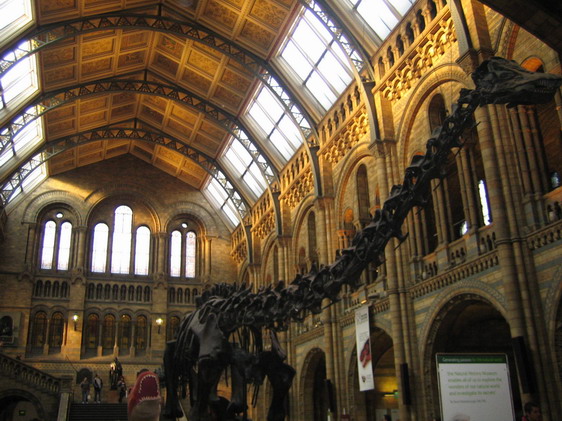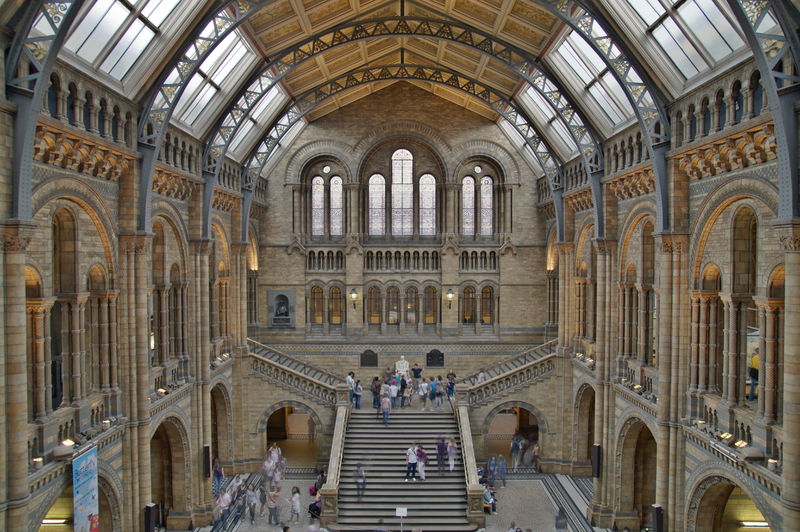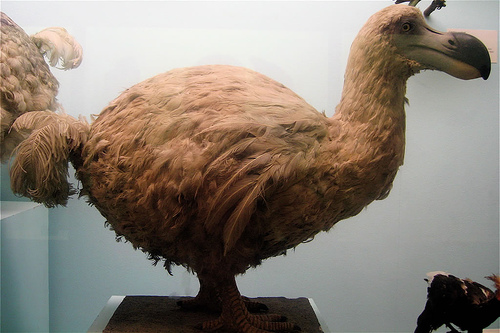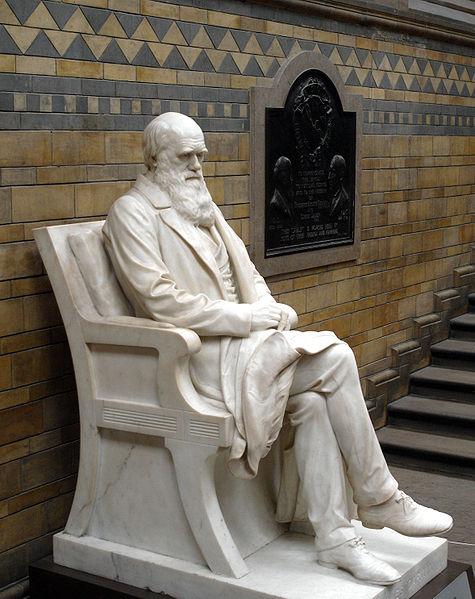History of this museum depends on the collection that British Government purchased from Sir Hans Sloane in the early 18th century. At that time, the collection is placed to the British Museum’s building. This collection did not last long and disappeared in time due to the ignorance and recklessness of the museum staff. But it still served to inspire a section on natural history.
In time additions were made to the collection in the British Museum. And when the Natural History section of the British Museum needed a separate building, a land purchased in South Kensington. For the design of the museum building a competition organized. Building’s construction began in 1873 and completed by 1880. Opening of the Natural History Museum was in 1881, but the moving process continued up to 1883. Building’s main axis is on same theoretic line with the Imperial College’s tower, Royal Albert Hall and Albert Memorial. All this buildings together were called Albertopolis.
[nrelate-related]
Even after the official opening, Natural History Museum was still stayed as a part of British Museum. Some institutions and science people like Darwin, Wallace and Huxley tried to give independent status to the museum in 1866, but until 1963 it was a part of the British Museum. Even after its independence, its name was still “British Museum (Natural History)”. Only in 1992, museum get its present name.
It would not be absurd if you come here only to see the building itself. When you shake off the astonishment of the glory you will see that the museum is partitioned into four main colors: Orange, Green, Blue and Red. Red section is about the formation of our planet and natural phenomena such as volcanoes and earthquakes. Green Section describes the ecology of the world. At the same time, meteorites that shaped the world also described in this section. Blue sections describes the era of dinosaurs. You can see the giant mammals and the human body here. Finally, orange section provides information on Darwin and his work.
You’ll need at least three hours to visit them all quickly, so see the sections that interests you. The orange section devoted to Darwin was a bit of disappointment for me. I was expecting more in an exhibition devoted to him in his homeland. Expecting to see his notebooks, his work, details about his life; I found a exhibition that seems to be prepared for students. Walking more and seeing less. This part of the museum is still being used by science people and researchers, maybe that is the reason. Keep in mind this if you decide to visit here.
One of the most attractive section is the blue section which is devoted to dinosaurs. I must warn you, though. If you have children with you, and this kid can move independently, but unable to make the right decisions for himself, take action to not loose him. This place is full of kids, believe me. This section (along with Science Museum) is the noisiest place in London by a large margin.
Like in Berlin, London museums also aim to the education of children. In fact, in some sections this is too much. You feel like you are in an interactive primary school class. But it may also have good sides. You can see a T-Rex which can move his head, neck and tail. More? He can move his eyes also and give frightening glances to visitors
Before leaving National History Museum, climb the stairs near the Darwin’s statue and follow the corridor to the end. First, examine the building from this best view and then see the mineralogy section. At the end of this section you can see the most valuable treasure in London open to the public.








Son yorumlar